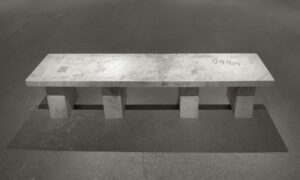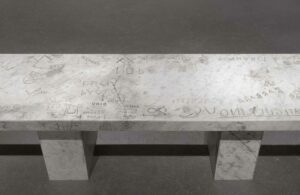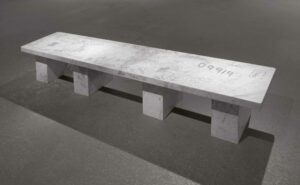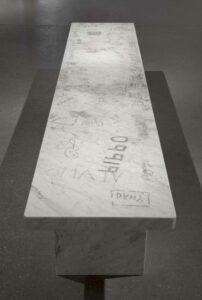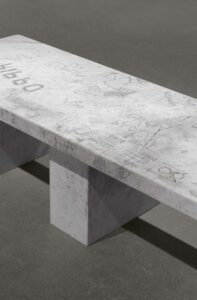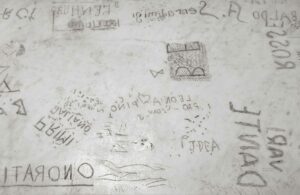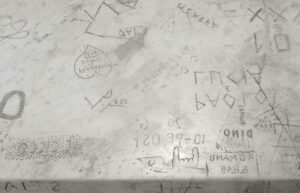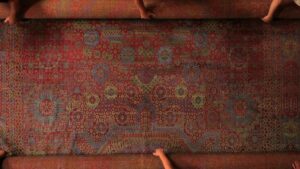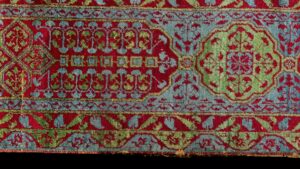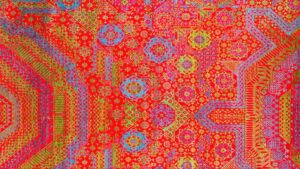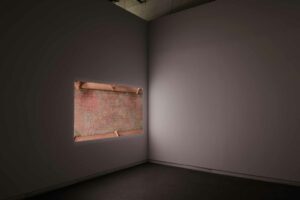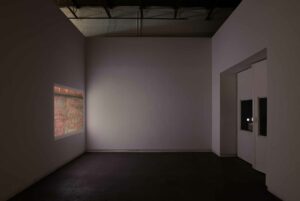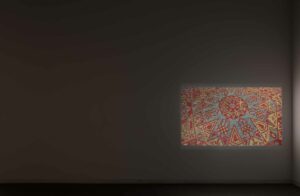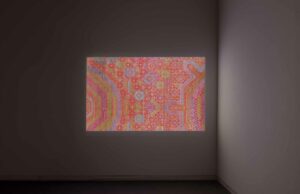Shannon Bool was born in Canada in 1972 and currently lives in Berlin. She studied at the Emily Carr University in Vancouver, the Cooper Union in New York and the Städelschule, Frankfurt. Her work has been featured in solo institutional exhibitions at the Illingworth Kerr Gallery, Calgary, Canada in 2016; the Contemporary Art Gallery, Vancouver, Canada in 2015; Bonner Kunstverein, Bonn, Germany in 2012; Gak-Gesellschaft für Aktuelle Kunst Bremen, Germany in 2010; and the Centre Rhénan d’Art Contemporain Alsace, Altkirch, France in 2010. Bool’s work has been included in group exhibitions in Portikus, Frankfurt a.M., Germany in 2017; the Metropolitan Museum of Art, New York in 2015; the Museum für Moderne Kunst Frankfurt am Main, Germany in 2014; and the Fondazione Sandretto Re Rebaudengo, Turin, Italy in 2013.
Shannon Bool’s work is influenced by literature, psychology, art history, and architecture. Over the years, Bool has developed an art practice that revisits art-historical narratives through a material practice spanning painting, textiles, photography and sculpture.
Michelangelo’s Place
Sculpture, conversation
2015
Michelangelo’s Place is a Carrara marble bench referencing the scale of the original benches that surround Piazzale Michelangelo in Florence, Italy. The piazza, built in 1869 as part of Florence’s urban renewal plan (initiated by the rise of an emerging middle class), is dedicated to Michelangelo and includes copies, cast in bronze, of his famous works. Bool archived and then carved selections of the graffiti found on the benches in Piazzale Michelangelo in order to examine how defacement can both subvert and uphold art history.
Forensics for a Mamluk
Video, conversation
2015
Produced in Florence the video, Forensics for a Mamluk, is where Bool exercises another mode of abstraction; this time the subject is one of the rarest and most valuable carpets in the world. The giant Egyptian Mamluk carpet (from the first half of the 16th century) was forgotten among stored items of the Palazzo Pitti until it was rediscovered in a sealed chamber at the palazzo by Alberto Boralevi, a Florentine carpet expert, in 1982. The video is comprised of segments showing extreme close ups, adjustments of the carpet’s RGB colour palette, and larger pan views of the carpet’s motif and texture. Like Michelangelo’s Place the video is concerned with the complexity of how we (the viewer) experience the overload of the Renaissance in Florence (i.e. the Stendhal syndrome) and the information that exists within material sources that are outside the obvious canon of art.
On Process
A conversation between Shannon Bool and Davood Madadpoor on process and conceptualizing of Michelangelo’s Place and Forensic for a Mamluk.
